Get in touch
(619) 218-2499
info@accucarpaint.com
GET A FREE QUOTE TODAY - CALL OR TEXT US (619) 218-2499
Auto paint & Body care resources
We love what we do and love to share our car care expertise.
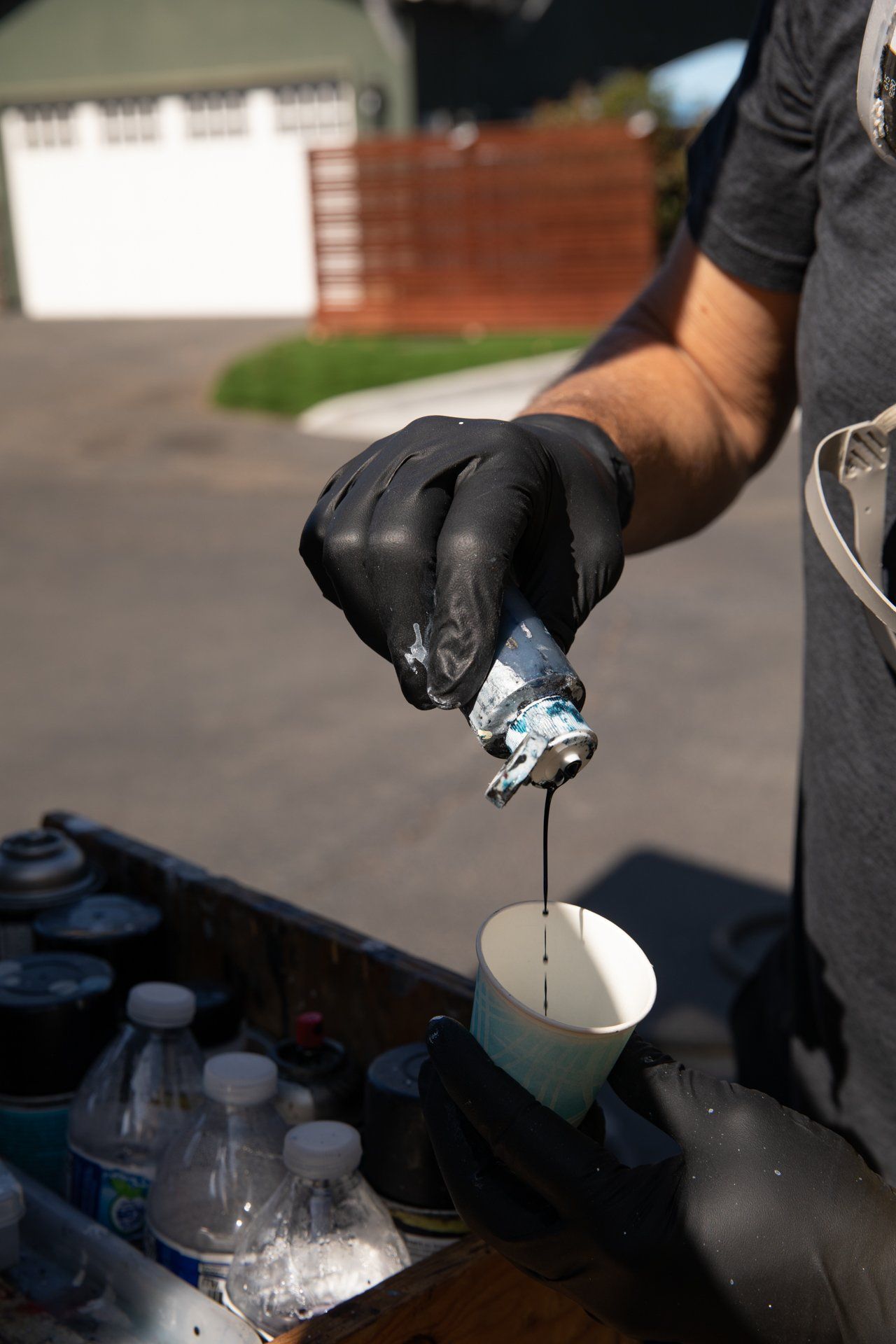
February 17, 2025
One of vehicle owners' most significant concerns when getting auto paint repairs is whether the new paint will match the existing color. A mismatched paint job can make repairs stand out, affecting the car’s appearance and resale value. Luckily, professional auto paint technicians use advanced technology and specialized techniques to ensure seamless color matching. In this blog post, we’ll explore the science behind paint matching and how experts achieve a flawless finish. 1. Understanding Automotive Paint Layers To fully grasp the complexity of paint matching, it's essential to understand the layers that make up a car's exterior paint job: Primer Layer: Provides a smooth, uniform base for the paint to adhere to. Base Coat (Color Coat): This is the actual color of the vehicle and is typically applied in multiple layers. Clear Coat: This transparent layer protects the paint from UV rays, weather, and minor scratches while enhancing its shine. Since each layer contributes to the final color perception, paint matching involves more than just choosing the correct base coat color—it also requires replicating the finish and depth of the original paint. 2. How Professionals Match Car Paint Colors Paint Codes: The First Step Every car manufacturer assigns a specific paint code to each vehicle color. This code, typically found on a label inside the door jamb, under the hood, or in the trunk, provides the starting point for identifying the right color formula. However, even if two cars share the same paint code, slight variations—caused by factors such as manufacturing location, age, and exposure to sunlight—can create subtle color differences. That’s why paint technicians don’t rely solely on paint codes for a perfect match. Spectrophotometers: Advanced Color Matching Technology Professionals use a spectrophotometer, a high-tech device that scans the vehicle’s existing paint to achieve precise color accuracy. This tool measures the way light interacts with the paint and breaks down its color composition into multiple components, including: Hue (Base Color) – The primary color of the paint. Chroma (Saturation/Intensity) – The richness or dullness of the color. Value (Brightness or Darkness) – How light or dark the color appears. The spectrophotometer generates a customized formula for mixing the perfect paint match by analyzing these factors. Computerized Mixing Systems Once the spectrophotometer determines the correct color formula, professionals use computerized mixing systems to create the precise blend of pigments. These systems allow for fine adjustments to match the car’s current paint condition and compensate for fading due to sun exposure. 3. Blending Techniques for a Seamless Finish Even with a perfect color match, simply painting over a damaged area can make the repair noticeable due to differences in texture, gloss, and aging. That’s where blending techniques come in. Feathering and Blending Instead of applying new paint only to the damaged section, professionals gradually "blend" the new paint into the surrounding area. This technique involves: Feathering the Edges - Lightly sanding the repair area and surrounding paint to create a smooth transition. Spraying in Layers - Applying the new paint in thin layers to gradually blend it with the existing paint. Clear Coat Application - The clear coat should be extended beyond the repair area to ensure a uniform finish and prevent noticeable edges. Color Fading Matching Because car paint can fade over time due to exposure to UV rays and environmental conditions, professionals often adjust the paint formula slightly to match the current shade of the vehicle rather than the original factory color. 4. The Role of Lighting in Paint Matching Color perception changes under different lighting conditions. That’s why auto body professionals use color-corrected lighting or inspect paint jobs in natural daylight to ensure accuracy. Some shops even use specialized sun lamps that simulate sunlight to verify that the paint blends seamlessly before finishing the job. 5. Why DIY Paint Matching Often Falls Short While DIY touch-up kits and spray paints are available, achieving a seamless color match at home is challenging due to several factors: Lack of Professional Equipment – Without a spectrophotometer and computerized mixing, creating an exact color match is nearly impossible. Limited Blending Techniques – DIY touch-ups often result in visible edges where new paint meets old paint. Differences in Paint Formulas – The same paint color may look different in aerosol cans versus professional spray guns, leading to inconsistencies. 6. The Accucar Paint Difference At Accucar Paint, we specialize in mobile paint repair services, bringing professional-grade paint matching to you. Our expert technicians use: ✅ Spectrophotometer Technology – For precise color analysis and custom paint mixing. ✅ Professional Blending Techniques – To ensure an invisible transition between old and new paint. ✅ High-Quality Clear Coats – For added protection and a flawless finish. If your car has scratches, scuffs, or paint damage, don't settle for mismatched touch-ups. Contact Accucar Paint today for expert mobile paint repair, and let us restore your vehicle’s flawless finish with the science of perfect color matching!
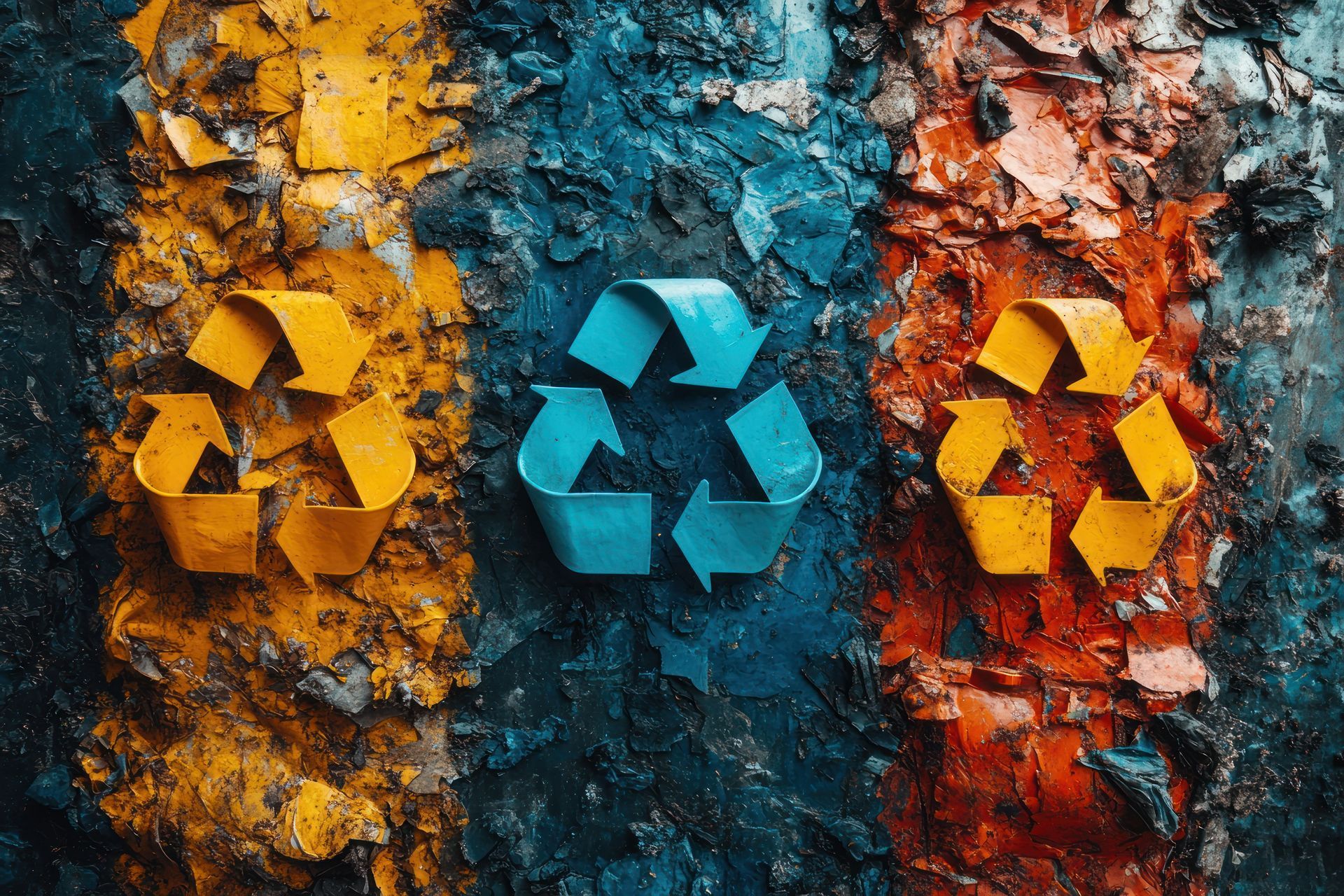
November 14, 2024
Auto paint repair is essential for maintaining a vehicle’s appearance, but it can have an environmental impact due to the materials and processes traditionally used in repairs. Fortunately, as awareness of environmental responsibility grows, the auto repair industry is adopting more eco-friendly practices. At Accucar Paint, we are committed to reducing our ecological footprint by using sustainable methods and materials. 1. Water-Based Paints: A Safer Alternative One of the biggest shifts in eco-friendly auto paint repair has been the move from solvent-based to water-based paints. Why Water-Based Paints Are Better Traditional solvent-based paints contain volatile organic compounds (VOCs) that harm the environment and human health. VOCs contribute to air pollution and smog formation and can cause respiratory issues for those exposed to them over time. Water-based paints, on the other hand, contain significantly lower levels of VOCs, making them a safer and more environmentally responsible choice. Benefits of Water-Based Paints Reduced Emissions: Water-based paints emit fewer VOCs, which reduces air pollution. High Quality: These paints offer excellent color matching, coverage, and durability, making them as effective as solvent-based alternatives. Healthier Work Environment: Lower VOC emissions create a healthier workspace for technicians, reducing their exposure to harmful fumes. By choosing a repair provider that uses water-based paints, you’re supporting a practice that reduces harmful emissions and protects the planet. 2. Proper Disposal of Hazardous Materials Auto paint repair can involve using hazardous materials, such as old paint, solvents, and thinners, which must be handled carefully to prevent environmental contamination. Safe Disposal Practices Responsible auto repair shops follow strict guidelines for disposing of hazardous materials to ensure they don’t end up in landfills or water systems. Here are a few ways eco-friendly shops manage waste: Licensed Disposal Services: Eco-conscious shops work with licensed waste disposal companies to safely dispose of or recycle hazardous materials, such as leftover paints, thinners, and solvents. Recycling: Some auto repair shops participate in recycling programs to repurpose scrap metal, plastic components, and other materials, reducing waste and conserving resources. Why It Matters Improper disposal of hazardous materials can lead to soil, water, and air pollution, causing long-term harm to ecosystems and public health. Proper disposal practices prevent these materials from leaching into the environment, supporting a cleaner and safer planet. 3. Reduced Waste and Efficient Use of Materials Modern repair shops strive to reduce waste by using materials more efficiently and reducing overuse in the repair process. Techniques to Minimize Waste Computerized Paint Matching: This technology allows repair shops to mix only the exact amount of paint needed for a job, minimizing waste and reducing leftover paint. Smart Application Methods: Eco-friendly repair shops employ high-volume, low-pressure (HVLP) spraying, which applies paint more precisely and reduces overspray, leading to less material waste. Benefits of Waste Reduction Reducing waste conserves resources and reduces the need for frequent disposal of unused materials, lowering a shop’s overall environmental footprint. 4. Energy-Efficient Practices Auto repair facilities can also minimize their impact by adopting energy-efficient practices in their daily operations. Energy-Saving Initiatives LED Lighting: Using LED lights throughout the facility significantly reduces energy consumption. Advanced Ventilation and Filtration Systems: Ventilation systems equipped with filters help reduce airborne particles and VOCs while recycling air, leading to cleaner indoor air and reduced energy use. Low-Emission Drying Systems: Many eco-friendly shops now use infrared drying systems, which are more energy-efficient than traditional drying booths, reducing the energy required to complete each job. How It Helps Energy-efficient practices reduce greenhouse gas emissions and lessen the demand on local energy resources, contributing to a more sustainable operation overall. 5. Training and Certification in Eco-Friendly Techniques For a repair shop to adopt truly sustainable practices, technicians must be trained in environmentally responsible methods and aware of best practices for reducing waste and emissions. Certification Programs Many repair shops invest in certifications, such as the Environmental Protection Agency (EPA) guidelines, to ensure they are up-to-date on the latest eco-friendly practices. Additionally, training programs keep technicians informed on responsible material handling, safe disposal, and energy-efficient repair methods. Benefits of Knowledgeable Technicians By choosing a shop that prioritizes eco-friendly training, you can be confident that your car is being repaired by knowledgeable professionals committed to minimizing environmental impact. 6. The Benefits of Choosing an Eco-Friendly Repair Service When you choose an auto repair service that implements eco-friendly practices, you’re contributing to a greener future. Here are a few ways you help: Reduced Air Pollution: Supporting water-based paints and responsible waste disposal means fewer toxic emissions and a healthier environment. Lower Carbon Footprint: Energy-efficient practices and reduced material waste lead to lower carbon emissions, positively impacting the environment. Cleaner Communities: Safe disposal of hazardous materials and reduced waste help protect local ecosystems and keep communities clean. Conclusion Auto paint repair has made great strides in adopting eco-friendly practices that reduce its environmental impact. Repair shops like Accucar Paint make it easier for car owners to enjoy a quality repair experience with a smaller environmental footprint by using water-based paints, ensuring proper disposal of hazardous materials, minimizing waste, and implementing energy-efficient methods. If you’re looking for a repair service that values both quality and sustainability, Accucar Paint is here to help. Our commitment to eco-friendly practices means you can restore your vehicle’s appearance while contributing to a cleaner, greener planet. Contact us today to learn more about our environmentally responsible auto paint repair services!

October 17, 2024
When your car suffers scratches, dents, or paint damage, you may wonder whether your auto insurance will cover the repairs. Navigating insurance policies and filing claims can feel complex, but understanding how auto insurance works with repair coverage can save you time, money, and frustration. In this guide, we’ll explain how insurance typically covers repairs for cosmetic damage, offer tips for filing claims, and provide advice on working with insurance companies for a smooth repair process. 1. Understanding Your Insurance Coverage for Cosmetic Repairs Comprehensive vs. Collision Coverage Whether or not your insurance covers repairs depends largely on the type of policy you hold and how the damage occurred: Collision Coverage: This covers repairs for damage resulting from accidents, such as a fender-bender or collision with another object. Collision coverage typically applies if a scratch, dent, or paint damage happens during an accident. Comprehensive Coverage: Comprehensive insurance covers damage from non-collision events, like vandalism, falling objects, or weather-related incidents (e.g., hail damage or a tree branch scratching your paint). Comprehensive coverage would likely cover the repair if the damage occurred due to such an event. Important Note: Basic liability insurance, which is legally required in most places, does not cover your vehicle’s cosmetic repairs, only damage you cause to others. Deductibles and Repair Costs Insurance claims for scratches, dents, and paint jobs are often subject to a deductible, which is the amount you must pay out of pocket before insurance kicks in. If the repair cost is less than or close to your deductible, paying for repairs may be more cost-effective without filing a claim. 2. When to File a Claim for Cosmetic Damage Deciding when to file an insurance claim for minor damages depends on the repair cost, your deductible, and the potential impact on your premium. Here are some scenarios where it might make sense to file a claim: High Repair Costs: If the repair costs exceed your deductible by a significant amount, filing a claim could save you money. Extensive Damage: For more extensive damage, such as multiple dents or scratches across several panels, filing a claim may be worthwhile to restore your vehicle to its original condition. Vandalism or Theft: For damages resulting from vandalism or attempted theft, filing a claim under comprehensive coverage can cover repairs you shouldn’t have to pay for out-of-pocket. However, remember that frequent claims, even for minor repairs, could lead to higher premiums. It’s often best to reserve claims for more costly repairs to avoid rate increases. 3. Tips for Filing a Claim Filing an insurance claim for auto repairs can be straightforward if you follow these steps: 1. Document the Damage Before doing anything else, document the damage thoroughly. Take clear photos of all scratches, dents, or paint damage. These will serve as evidence and useful for your claim and repair estimates. 2. Obtain Multiple Repair Estimates Obtaining estimates from at least two or three repair shops, including those approved by your insurer is a good idea. This helps you understand the full scope of the costs and ensures you’re getting fair quotes. Insurance companies often have preferred vendors, but you’re not obligated to use them. 3. Contact Your Insurance Company Promptly Reach out to your insurance provider as soon as possible to report the damage. They will guide you through the claim process and let you know the required information. Sometimes, you may need to meet with an adjuster who will assess the damage and approve the repair costs. 4. Review Your Policy’s Terms Each insurance policy has its specific terms and conditions. Reviewing your policy will help you understand what’s covered, your deductible, and whether there are any exclusions related to cosmetic repairs. Knowing this can prevent surprises during the claim process. 5. Consider the Impact on Your Premium Be aware that filing a claim for cosmetic repairs could increase your premium. Before proceeding, ask your insurer if this type of claim will affect your rates or if they offer a “claims forgiveness” program, which may reduce the impact on your premium for the first claim. 4. Working with the Insurance Company and Repair Shops Use an Approved Repair Shop (If Preferred) Many insurance companies have partnerships with specific repair shops, which may streamline the process and offer perks like repair guarantees. While you can choose any licensed shop, working with an approved shop may expedite repairs and make coordination with your insurer easier. Communicate Clearly Clear communication with the insurance company and repair shop is key to ensuring the repair process goes smoothly. Keep your insurance representative updated on the repair status and document all communication in case any disputes arise. Understand Warranty and Quality Standards Ask about warranties on repairs, especially if you’re using a shop recommended by your insurer. Many approved shops offer warranties that cover additional repairs if there are issues with the initial work. 5. Weighing the Pros and Cons of Filing a Claim For minor cosmetic damage, there are pros and cons to filing an insurance claim. Here’s a quick breakdown: Pros: Filing a claim can save you money if the repair costs significantly exceed your deductible. Claims for vandalism or theft-related damage often won’t count against you like collision claims. Cons: For minor damage, the cost of repairs might be close to your deductible, making it financially unwise to file a claim. Additionally, frequent claims may raise your premium, even if the repairs are minor. Final Thoughts Understanding how your auto insurance works for cosmetic repairs can help you make smart choices when faced with scratches, dents, or paint damage. Remember to document the damage, explore repair options, and carefully review your policy before filing a claim. Doing so lets you keep your vehicle looking its best while making the most of your insurance coverage. If you’re looking for expert mobile repair services to address scratches, dents, or paint damage, Accucar Paint is here to help . Our experienced technicians provide high-quality repairs that restore your vehicle’s appearance, giving you peace of mind and saving you time. Contact us today for a quote or consultation!
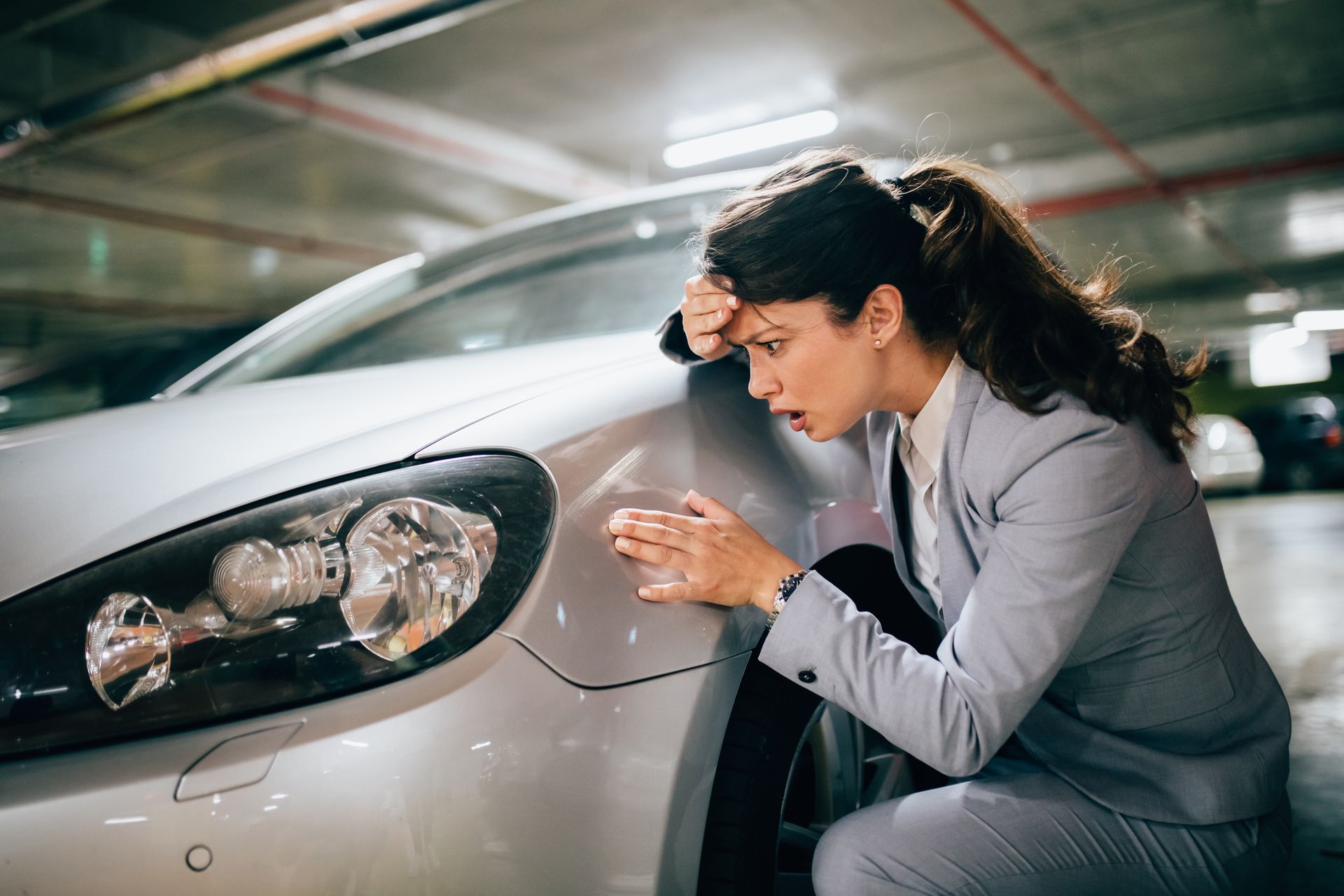
September 20, 2024
Car scratches are an inevitable part of vehicle ownership. Whether caused by a shopping cart, tree branches, or an accidental key scrape, they can be frustrating and diminish the appearance of your vehicle. However, not all scratches are the same, and each type requires a different repair approach. In this post, we’ll break down the different types of car scratches—clear coat, primer, paint, and deep scratches—and explain the best treatments for each. 1. Clear Coat Scratches What Are Clear Coat Scratches? Clear coat scratches are the most common and superficial type of scratch, affecting only the top transparent layer of your car’s paint job. This clear layer serves as a protective barrier against UV rays and minor abrasions. These scratches often appear as swirl marks or faint lines and are usually caused by improper washing techniques, dust, or light contact with abrasive surfaces. How to Treat Clear Coat Scratches Since clear coat scratches are only surface-level, they are relatively easy to fix with the right products. Polishing and Buffing: Light clear coat scratches can often be polished away using a microfiber cloth and a polishing compound. Buffing the surface will smooth out the scratches and restore the glossy finish. Scratch Removal Products: There are many scratch removal kits designed specifically for clear coat damage. These kits usually include a polish, buffing pad, and a protective wax to restore shine. Product Recommendation: Meguiar’s ScratchX 2.0 or Turtle Wax Scratch Repair Kit Prevention Tips: Always wash your car using the two-bucket method and microfiber towels to avoid creating swirl marks. Apply wax or a sealant regularly to protect the clear coat. 2. Paint Scratches What Are Paint Scratches? Paint scratches are deeper than clear coat scratches and penetrate into the colored layer of paint beneath the clear coat. These scratches are often more visible because they reveal the contrasting color of the primer or the metal underneath. Common causes include deeper scrapes from keys, minor collisions, or debris from the road. How to Treat Paint Scratches Repairing paint scratches requires more work than clear coat scratches, but they can still be addressed without a full repaint if caught early. Touch-Up Paint: For smaller scratches, touch-up paint that matches your vehicle’s color can be applied. This will fill in the scratch and help blend it with the surrounding paint. Once dry, you can use a polishing compound to smooth it out. Wet Sanding and Buffing: Deeper paint scratches may require wet sanding with very fine grit sandpaper to even out the surface. Afterward, the area can be polished and sealed. Product Recommendation: Dupli-Color Perfect Match Touch-Up Paint Prevention Tips: Avoid parking too close to other vehicles or objects that could scratch the paint. Apply a ceramic coating or paint sealant to add a durable layer of protection against scratches. 3. Primer Scratches What Are Primer Scratches? Primer scratches go deeper than the paint layer and reach the primer layer, which is applied beneath the paint to help it adhere to the vehicle’s surface. These scratches are more severe because they expose the primer, often creating a noticeable contrast in color. These are typically caused by more forceful impacts or contact with sharp objects. How to Treat Primer Scratches Because primer scratches penetrate through the paint layer, they usually require more comprehensive repair techniques. Touch-Up Paint and Primer: In some cases, touch-up paint alone won’t be enough. You may need to apply a thin layer of primer before using touch-up paint to ensure proper adhesion and color blending. Professional Repair: If the damage is extensive, a professional repair might be necessary to sand down the area, apply new primer, and repaint the affected section. This ensures the repair is seamless and long-lasting. Product Recommendation: Dr. ColorChip Paint Chip Repair Kit (for minor primer scratches) Prevention Tips: Install protective side moldings or paint protection film to shield vulnerable areas from damage. Be mindful of parking spaces and avoid areas with overhanging tree branches or rough terrain. 4. Deep Scratches (Into the Metal) What Are Deep Scratches? Deep scratches are the most severe type of scratch, penetrating through the clear coat, paint, and primer layers, exposing the bare metal underneath. These scratches are typically the result of significant collisions, sharp objects, or severe abrasions. Left untreated, deep scratches can lead to rust and corrosion, which can severely damage your car’s body over time. How to Treat Deep Scratches Repairing deep scratches is a more complex process and often requires professional attention. Rust Prevention: If bare metal is exposed, it’s crucial to address the issue quickly to prevent rust. Use a rust inhibitor before proceeding with any other repair. Filler, Primer, and Paint: Deep scratches often require filling the scratch with a body filler, sanding it down, and applying primer before repainting the area. This process ensures the damage is sealed and protected from further corrosion. Professional Auto Body Repair: For extensive deep scratches, it’s often best to leave the repair to professionals. They have the tools and expertise to sand, prime, and repaint the damaged area to factory specifications. Product Recommendation: Bondo Scratch and Dent Repair Kit (for DIY deep scratch repairs) Prevention Tips: Invest in paint protection film or ceramic coatings, especially for high-risk areas like the front bumper and hood. Address deep scratches immediately to prevent rust and further damage to the metal. Conclusion Understanding the type of scratch on your car is the first step in determining the right treatment. While minor scratches like clear coat or paint scratches can often be treated with DIY methods, deeper scratches that reach the primer or metal layers require more attention and, in some cases, professional repair. By addressing scratches promptly and using the right products, you can maintain your vehicle’s appearance and prevent long-term damage. If you’re unsure about the extent of the damage or need assistance with repairs, contact Accucar Paint for expert mobile repair services to keep your car looking its best!
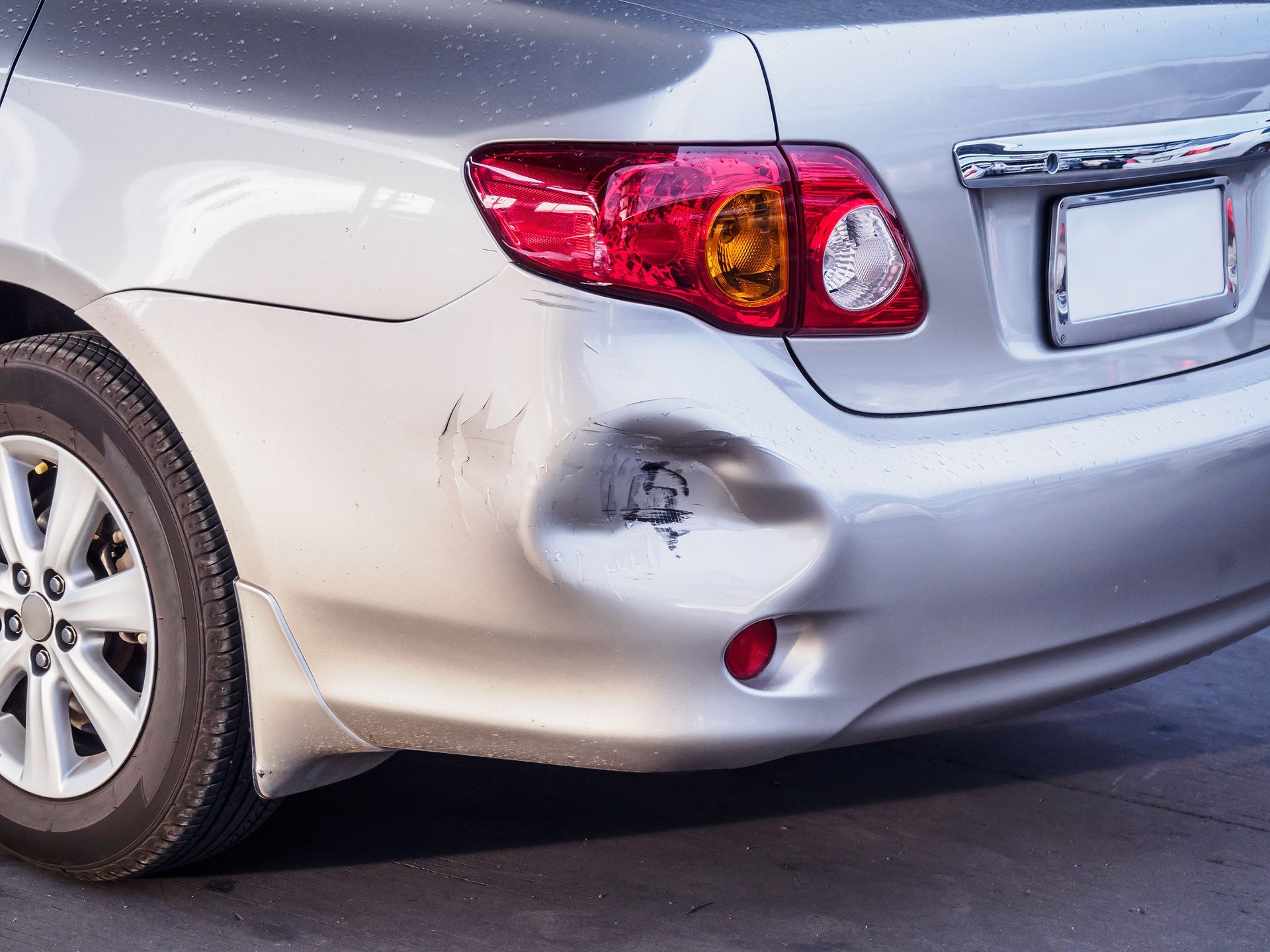
August 16, 2024
Your car’s bumper is more than just a cosmetic feature; it plays a crucial role in protecting you and your vehicle during a collision. However, many drivers tend to delay bumper repairs after an accident or minor damage, assuming it’s a purely aesthetic issue. In reality, timely bumper repair is essential for safety and financial reasons. In this blog post, we’ll explore the importance of addressing bumper damage promptly and how doing so can save you money and ensure your safety on the road. 1. Safety Implications of Damaged Bumpers Protecting You in a Collision Bumpers are designed to absorb and distribute the force of an impact during a collision. This absorption helps minimize the damage to your vehicle’s frame and, more importantly, reduces the risk of injury to you and your passengers. When a bumper is damaged, its ability to perform this critical function is compromised. A damaged bumper may not absorb impact as effectively in subsequent accidents, leading to more severe damage and potential injuries. Structural Integrity Even minor bumper damage can affect your vehicle's structural integrity. Cracks, dents, or misalignment can weaken the bumper’s ability to protect critical components such as the engine, radiator, and lights. If left unrepaired, this could result in more extensive and costly damage in the event of another accident. Compromised Airbag Sensors Many modern vehicles have airbag sensors embedded in the front and rear bumpers. These sensors detect collisions and trigger the deployment of airbags. If your bumper is damaged, the sensors may not function correctly, delaying or preventing airbag deployment during an accident. Timely bumper repair ensures that all safety systems in your vehicle remain operational and effective. 2. Cost Savings from Prompt Repairs Preventing Further Damage What may start as a small crack or dent can quickly escalate into a more significant issue if left untreated. Water, dirt, and debris can seep into the damaged area, causing rust and corrosion. Over time, this can lead to more extensive damage that requires more costly repairs. By addressing bumper damage promptly, you can prevent these issues and save money in the long run. Insurance Considerations If you delay bumper repairs, you might face complications with your insurance coverage. Some insurance policies may not cover additional damage because the initial damage wasn’t repaired promptly. By repairing your bumper immediately, you ensure that any further issues are covered under your policy, potentially saving you significant money. Maintaining Vehicle Value A well-maintained vehicle retains its value better than one with visible damage. If you plan to sell or trade-in your car, a damaged bumper can significantly decrease its resale value. Repairing the bumper promptly helps maintain your vehicle’s appearance and market value, ensuring you get the best possible return when it’s time to sell. 3. Avoiding Legal Issues Compliance with Safety Regulations Driving with a damaged bumper may violate vehicle safety regulations in some states, leading to fines or other legal consequences. Keeping your bumper in good condition ensures that your vehicle complies with all safety standards, helping you avoid potential legal issues. Liability Concerns If you’re involved in another accident while driving with a damaged bumper, you could be held partially liable for the extent of the damage, especially if the bumper’s compromised condition contributed to the accident's severity. Timely repairs can help mitigate this risk and protect you from potential liability. 4. Convenience of Mobile Repair Services Save Time and Hassle With mobile bumper repair services like those offered by Accucar Paint, there’s no need to take time out of your busy schedule to visit a repair shop. Our experienced technicians come to you, equipped with all the tools to repair your bumper quickly and efficiently. This convenience makes it easier than ever to address bumper damage promptly, ensuring your vehicle remains safe and in top condition. Quality Repairs at Your Convenience Our mobile repair services use high-quality materials and advanced techniques to restore your bumper to its original condition. Whether it’s a minor dent or more extensive damage, we provide the same craftsmanship you would expect from a traditional repair shop, all at a location and time that suits you. Conclusion Timely bumper repair is not just about maintaining your vehicle’s appearance; it’s crucial to ensuring your safety and avoiding unnecessary expenses. By addressing bumper damage promptly, you protect your car’s structural integrity, maintain its resale value, and prevent further costly repairs. Don’t wait until it’s too late—take advantage of convenient mobile repair services to keep your vehicle in top shape and ready for the road. Contact Accucar Paint today to schedule your bumper repair and experience the peace of mind of driving a safe, well-maintained vehicle.
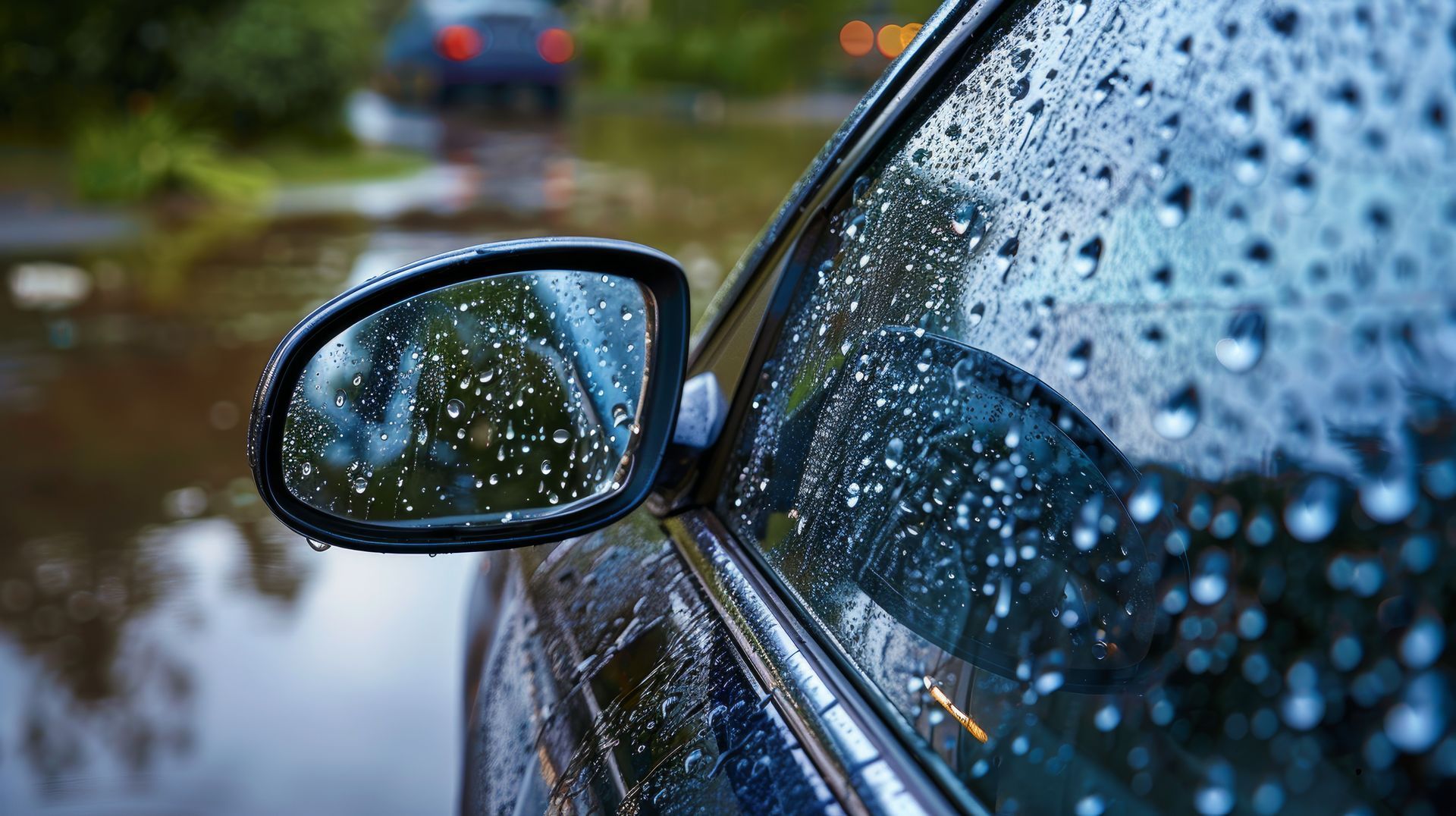
July 23, 2024
North County San Diego offers beautiful weather year-round, but the local climate and environmental conditions can still damage your vehicle. Whether it's the summer sun or the winter rain, each season brings unique challenges for maintaining your car’s paint and body. Here are some seasonal car care tips to keep your vehicle looking its best throughout the year. Spring: Prepare for Pollen and Rain Springtime in North County San Diego is beautiful, but it can also bring pollen and occasional showers that can damage your vehicle’s paint. Wash Regularly Remove Pollen: Pollen can be abrasive and may damage the paint if left on the surface for too long. Regular washing helps remove pollen buildup. Use Car-Specific Shampoo: Opt for a gentle, car-specific shampoo to avoid stripping protective wax layers. Apply a Protective Wax Shield Against Rain: A good coat of wax can provide a barrier against rainwater, which can sometimes contain contaminants that harm your paint. Maintain Shine: Waxing also helps keep your car looking shiny and new. Check for Rust Inspect Regularly: Rain and moisture can lead to rust formation. Inspect your car for any signs of rust and address them immediately. Product Recommendations: Meguiar’s Gold Class Car Wash Turtle Wax Super Hard Shell Paste Wax Summer: Guard Against Sun and Heat The summer sun in North County San Diego can be intense, causing potential damage to your car’s paint and interior. Park in the Shade Avoid Direct Sunlight: Whenever possible, park your car in the shade or use a car cover to protect it from UV rays. Use a UV Protectant Protect Paint and Trim: Apply a UV protectant to the exterior paint and plastic trim to prevent fading and cracking. Cover Interior: Use sunshades to protect the dashboard and seats from UV damage. Keep it Clean Remove Bird Droppings: Bird droppings can be acidic and damage your paint. Clean them off as soon as possible. Wash Frequently: Regular washing helps remove any contaminants that may have accumulated during the hot weather. Product Recommendations: 303 UV Protectant Spray Covercraft Car Sunshade Fall: Prepare for Cooler Temperatures and Debris As temperatures cool, fallen leaves and other debris can affect your vehicle. Clear Debris Regularly Clean the Exterior: Leaves and twigs can scratch your car’s paint. Remove debris from the exterior of your car regularly. Check Under the Hood: Debris can accumulate under the hood and cause damage. Make sure to clean this area regularly. Apply a Sealant Extra Protection: Applying a paint sealant before winter sets in can provide additional protection against the elements. Long-Lasting: Sealants tend to last longer than wax, offering better protection through the fall and winter. Inspect and Repair Look for Damage: Fall is a good time to inspect your car for any damage that may have occurred during the summer and repair it before winter. Product Recommendations: Chemical Guys JetSeal Paint Sealant Meguiar’s All-Season Detailer Winter: Defend Against Rain and Moisture Winter in North County San Diego can bring rain and moisture, which can lead to potential paint and body damage. Regular Washing Prevent Rust: Washing your car regularly helps prevent rust caused by moisture. Use the Right Products: Choose a car shampoo that contains wax to protect during washes. Wax and Seal Double Up on Protection: Applying wax and a sealant can offer maximum protection against winter weather. Focus on Vulnerable Areas: Pay special attention to areas prone to rust, such as the undercarriage and wheel wells. Use a Car Cover Protect from Moisture: A waterproof car cover can protect your car from rain and moisture, especially if you don’t have access to covered parking. Breathable Material: Ensure the cover material is breathable to prevent moisture buildup. Product Recommendations: CarGuys Hybrid Wax Sealant Kayme Four-Layer Car Cover By following these seasonal car care tips, you can protect your vehicle’s paint and body from the unique challenges the North County San Diego climate poses. Regular maintenance and using the right products will help keep your car looking pristine year-round.
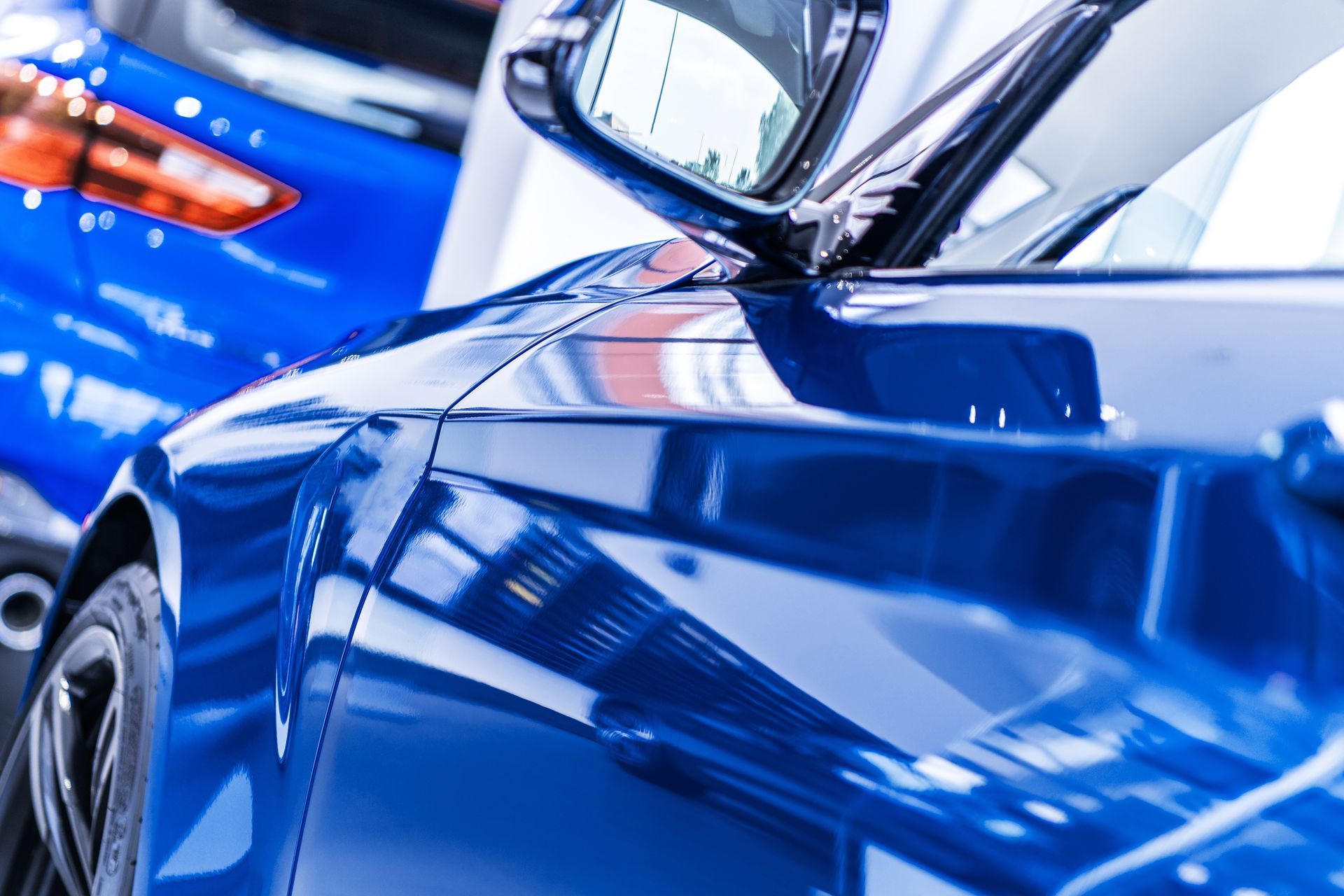
June 18, 2024
Your car’s paint job is not just about aesthetics; it’s also the first line of defense against the elements. Protecting your car’s paint from scratches, sun damage, and environmental factors can extend its lifespan and maintain its value. Here’s a comprehensive guide on how to keep your vehicle’s paint looking its best, including product recommendations and washing tips. 1. Regular Washing Keeping your car clean is the first step in maintaining its paint job. Dirt, grime, and road salt can damage the paint if left on the surface too long. Here’s how to wash your car properly: Use the Right Products: Choose a car-specific shampoo that’s gentle on paint. Avoid household cleaning agents, which can strip the protective wax and damage the paint. Microfiber Mitts: Use a soft microfiber wash mitt to avoid scratching the surface. Two-Bucket Method: Use one bucket for the soapy water and another for mitt rinsing. This helps prevent dirt from scratching the paint. Dry Thoroughly: After washing, dry your car with a microfiber towel to prevent water spots. Product Recommendations: Meguiar’s Gold Class Car Wash Chemical Guys Microfiber Wash Mitt The Rag Company Microfiber Towels 2. Regular Waxing Waxing provides a protective layer that shields your car’s paint from UV rays, bird droppings, and other contaminants. Aim to wax your car every three months. Choose Quality Wax: Select a high-quality carnauba wax or synthetic sealant. Apply Evenly: Use an applicator pad to apply wax in small sections, allowing it to haze before buffing it off with a clean microfiber towel. Product Recommendations: Meguiar’s Ultimate Liquid Wax Turtle Wax ICE Seal N Shine 3. Use a Paint Sealant Consider applying a paint sealant for longer-lasting protection. Unlike wax, sealants are made from synthetic compounds that offer more durable protection. Apply Twice a Year: Paint sealants can last up to six months, making them a convenient option for long-term protection. Follow Instructions: Each product may have specific application steps, so follow the manufacturer’s guidelines for the best results. Product Recommendation: Chemical Guys JetSeal Paint Sealant 4. Parking and Sun Protection UV rays can cause paint to fade and deteriorate over time. Protect your car by minimizing sun exposure. Park in the Shade: Whenever possible, park your car in a garage or under a carport. Use a Car Cover: I f you don’t have access to covered parking, consider using a car cover to protect your vehicle from the sun and other environmental factors. Product Recommendation: Kayme Four-Layer Car Cover 5. Immediate Attention to Damages Addressing scratches, bird droppings, and tree sap immediately can prevent long-term damage. Scratch Removers: Use a scratch remover for minor scratches and swirl marks. Bird Droppings and Tree Sap: Clean these off immediately using a detailer spray and microfiber cloth. If left untreated, these substances can be acidic and may eat into the paint. Product Recommendations: Meguiar’s ScratchX 2.0 Chemical Guys Speed Wipe Quick Detailer 6. Paint Protection Film Consider installing a paint protection film (PPF) for the ultimate protection. This clear, durable film can protect your car’s paint from scratches, chips, and other damage. Professional Installation: While DIY kits are available, professional installation ensures the film is applied correctly and provides maximum protection. Product Recommendation: 3M Scotchgard Paint Protection Film 7. Regular Maintenance Inspect Regularly: Regularly check your car’s paint for any signs of damage or wear. Detailing: Professional detailing can help maintain your car’s appearance and protect its paint. Schedule detailing at least once a year. Following these tips and using the recommended products can keep your car’s paint looking new for years. Regular maintenance and protection are key to preserving your vehicle's beauty and value.
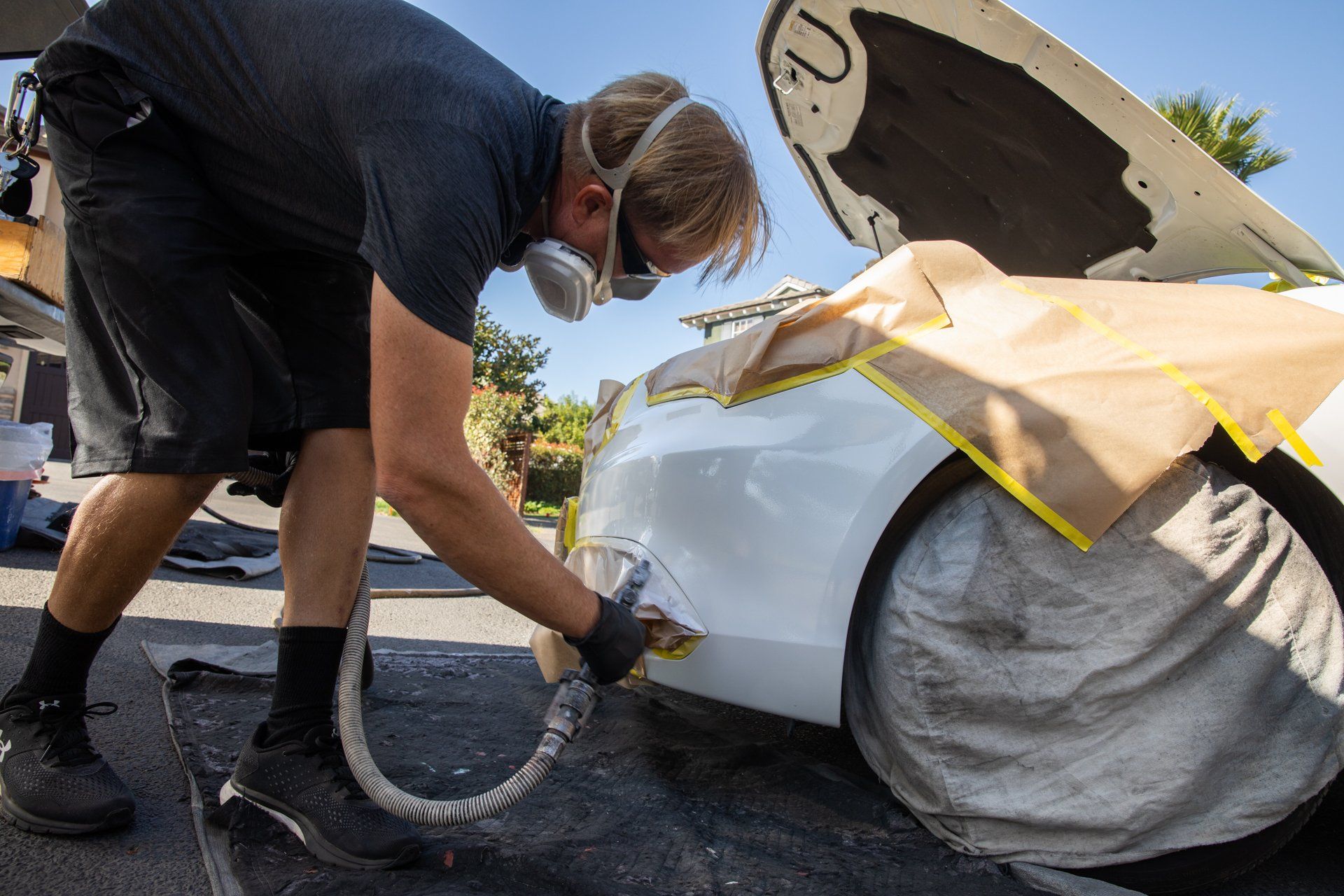
May 14, 2024
Welcome to our comprehensive guide on auto paint repair! Whether you've experienced a minor scratch or a significant paint chip, understanding the repair process can help you make informed decisions about maintaining your vehicle's appearance and value. In this post, we'll walk you through how professionals assess paint damage, their tools and techniques, and the advantages of professional repair over DIY methods. Assessing the Damage A thorough damage assessment is the first step in any auto paint repair process. This involves more than just eyeballing the scratch or dent; it requires a detailed evaluation to understand the extent and depth of the damage. Professionals use various tools to assess the affected area, including LED lights and magnifying glasses that help them see the smallest details. They also consider the location of the damage and whether it has affected the metal or plastic components of the vehicle. Tools and Techniques Used in Professional Auto Paint Repair Once the damage is assessed, the repair process begins. Here’s what that typically involves: Cleaning: The area around the damage is cleaned thoroughly to remove any dirt, grease, or wax that could interfere with the adhesion of new paint. Sanding: The damaged area and a decent margin around it are sanded down to create a smooth, even surface. Depending on the extent of the damage, this might involve different grades of sandpaper. Priming: After sanding, a primer is applied to the bare metal or plastic to ensure the paint adheres properly. This also helps to prevent rust in the case of exposed metal. Color Matching: One of the most crucial steps in auto paint repair is matching the paint color to the existing vehicle color. Professionals use a computerized system to mix paint to match the original color. Painting: The matched paint is applied in layers, allowing sufficient drying time between each layer. The technique used here is crucial, as it must blend seamlessly with the original paint. Clear Coating: A clear coat is applied over the new paint to protect it from UV rays, dirt, and moisture. It also gives the paint the glossy finish that vehicles have when they come out of the factory. Polishing: Finally, the area is polished to ensure the new paint blends perfectly with the old paint, restoring the vehicle’s original appearance. Benefits of Professional Repair vs. DIY Methods While there are many DIY paint repair kits available on the market, professional repair offers several advantages: Expertise and Precision: Professionals have the training and tools to perform repairs with precision that is difficult to achieve with DIY kits. Quality Materials: Professional auto shops use high-quality paints and materials that are likely to last longer and withstand the elements better than most DIY products. Color Matching: Matching automotive paint is an art. Professionals have access to technology that matches the paint exactly, avoiding the often noticeable discrepancies in DIY jobs. Guarantees: Many professional repairs come with a warranty or guarantee, giving you peace of mind that the repair will last. Conclusion Auto-paint repair is a delicate process that requires precision and expertise. While DIY kits can be tempting for small, less visible damage, professional repairs ensure your vehicle looks great and retains its value. By understanding the steps and techniques involved, you can decide which route is best for your car's needs. Whether you choose the DIY route or go professional, taking care of your vehicle’s paint is essential for maintaining its aesthetic appeal and structural integrity.
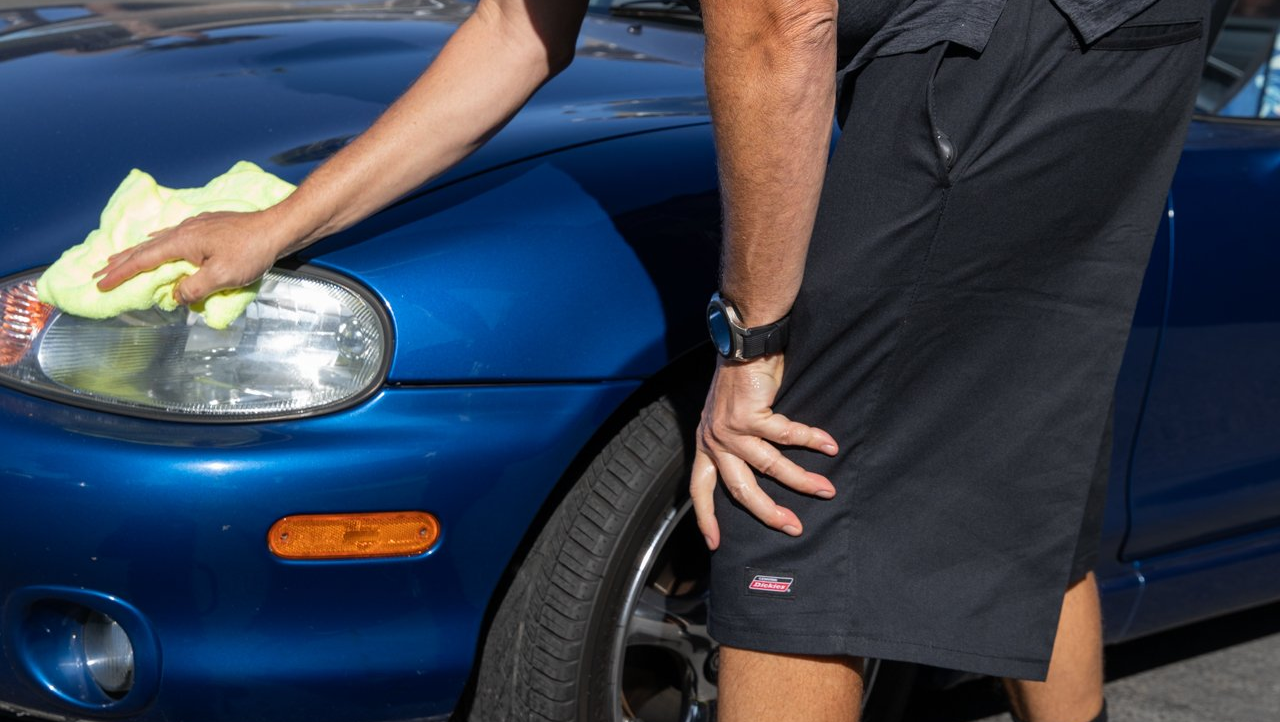
April 8, 2024
When repairing scratches on your car, vehicle owners often face the dilemma of choosing between a do-it-yourself (DIY) approach or seeking professional help. Both options have merits and drawbacks. This article will delve into scratch repair, comparing DIY repair kits and professional repair services on several fronts, including quality, longevity, and overall value. We aim to help you make an informed decision that suits your budget and ensures the best care for your car. Understanding the Basics of Car Scratches Before we compare repair options, it's important to understand that not all car scratches are created equal. They vary in depth and severity, typically categorized into clear coat scratches, paint scratches, and deep scratches that reach the primer or metal. The nature of the scratch significantly influences the repair method and the success rate of DIY kits versus professional services. DIY Scratch Repair Kits: Pros and Cons DIY scratch repair kits are readily available at automotive stores and online, promising an easy and cost-effective solution for minor scratches. These kits usually come with a scratch remover, application tools, and sometimes, a clear coat pen for sealing the repair. Pros: Cost-Effective: DIY kits are significantly cheaper than professional repair services. They offer a budget-friendly option for minor, surface-level scratches. Convenience: There's no need to schedule an appointment or wait for the repair to be done. You can fix the scratch at your convenience, right in your driveway or garage. Cons: Quality and Precision: Matching the paint color and achieving a smooth, seamless finish can be challenging, especially for beginners. There's also a risk of further damage if the scratch is not properly assessed or the repair is done incorrectly. Longevity: DIY repairs may not last as long as professional ones, especially if they aren't sealed correctly. Exposure to the elements and car washes can quickly degrade a DIY repair job. Professional Scratch Repair Services: Pros and Cons Professional auto body shops have the expertise, tools, and technology to repair scratches of all depths and severities. They can precisely match your car's paint color and ensure the repair blends seamlessly with the surrounding area. Pros: High-Quality Repairs: Professionals use advanced techniques and high-quality materials to repair scratches. Their expertise ensures the repair is virtually undetectable and restores the car's aesthetic appeal. Durability: Professional repairs are designed to last. Using premium materials and proper sealing techniques protects the repair from the elements and wear and tear over time. Time-Saving: Although taking your car to a professional requires scheduling and possibly waiting for the repair, your time is minimal compared to doing it yourself. Professionals can also assess the damage accurately, ensuring that all aspects of the repair are addressed. Cons: Cost: Professional services are more expensive than DIY kits. However, the cost is justified by the quality and longevity of the repair. Convenience: Depending on the extent of the damage and the shop's schedule, you might have to leave your car at the repair shop for a day or two. Making the Right Choice When deciding between DIY and professional scratch repair, consider the following: Severity of the Scratch: A DIY kit might suffice for minor surface scratches. However, professional repair is advisable for deeper scratches that require more precise color matching and layering. Your Skill Level: If you have experience with car repairs and are comfortable using the tools and materials in DIY kits, you might achieve satisfactory results. Otherwise, the risk of a botched job is high. Value of Your Car: Professional repair is recommended for high-value or luxury cars to preserve their value and appearance. Long-Term Costs: While DIY kits are cheaper upfront, a poorly done repair might require professional correction later, increasing the overall cost. In conclusion, while DIY scratch repair kits offer a quick and inexpensive solution for minor scratches, the quality, durability, and value of professional repairs are unmatched for more significant damage. Ultimately, your decision should be based on the severity of the scratch, your personal experience and comfort level with car repairs, and the long-term value you wish to preserve in your vehicle.
Service Hours
AccuCar is available for appointments seven days a week from 9am to 5pm.
Service Areas
AccuCar serves North County San Diego, also La Mesa and surrounding areas of San Diego County.
© 2025
All Rights Reserved | AccuCar Paint | Website & Marketing by GoBeRewarded
